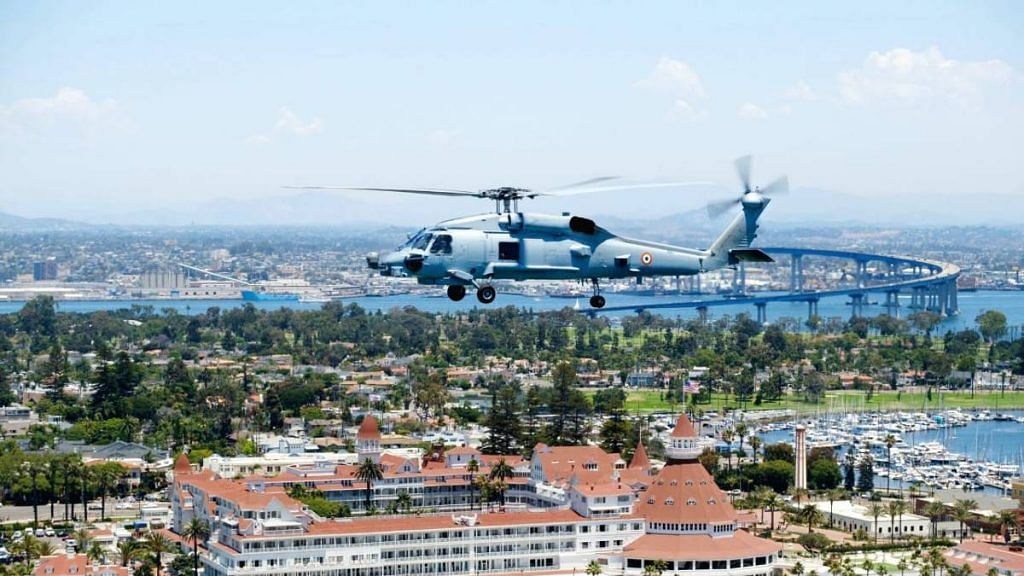New Delhi: India Friday formally received the first two of the 24 MH-60 ‘Romeo’ anti-submarine helicopters at the San Diego’s Naval Air Station North Island in the US, which the Indian Navy said will enhance its “three dimensional capabilities”, i.e. on the surface, in the air and underwater.
The handover is a sign of growing relations between the US and India — the two aircraft are from the US Navy’s stock, given to India to ensure faster induction.
According to sources in the Indian defence and security establishment, the first batch of the helicopters, also known as ‘submarine hunters’, will land in India only mid next year. This is because the helicopters will be used for training an Indian crew in the US.
More will be handed over to India in the coming months under a USD 2.4 billion deal.
The Romeo, manufactured by Lockheed Martin Corporation, is an all-weather helicopter designed to support multiple missions with state of the art avionics and sensors.
India had ordered 24 of these helicopters under the Foreign Military Sales (FMS) from the US government last year.
FMS is the American equivalent of the government-to-government contracts India has carried out with Russia for various systems and with France for the Rafale fighter jets.
The helicopters will also be modified with several equipment and weapons unique to India, the Navy said in a statement.
Sources said these relate to the sensors and specialised weapons package, which includes Hellfire air-to-surface missiles and Mark 54 anti-submarine torpedoes.
ThePrint had reported in April that these helicopters will be delivered in July despite the Covid-19 pandemic.
Hamid Salim, vice president, Sikorsky Maritime & Mission Systems, which was bought over by Lockheed Martin, said the delivery of the first two MH-60R Romeo helicopters to the Indian Navy marks the beginning of a new era of collaboration and partnership between the United States Navy, the Indian Navy and Sikorsky.
William L. Blair, vice president and chief executive, Lockheed Martin India, said, “MH-60R is the most advanced maritime multi-mission helicopter in operation — deployed globally, and its mission performance by far, second to none. We stand committed to making this program a tremendous success in partnership with the United States Navy and the Indian Navy.”
Also read: US clearance for anti-sub chopper sale to India comes as Pakistan bets big on submarines
Flip to Navy’s three-dimensional capabilities
The 24 Romeo, ordered by India last year, is meant to meet the immediate requirement of the Navy which currently relies on its P-8i aircraft for anti-submarine operations amid China’s increasing forays into the waters around India.
This will replace its fleet of the ageing British-built Sea King helicopters, which is now mostly used for transport rather than its actual role — anti-submarine warfare.
The Boeing P8i aircraft, that is currently deployed, operates from land and is used to keep vigil on enemy submarines and for reconnaissance missions.
The Navy, though, is in dire need of ship-borne helicopters. It is also pursuing a separate programme for 123 Naval Multi-Role Helicopters (NMRH) under the ‘Make in India’ initiative. However, the programme has not made much headway.
The Romeo choppers also have anti-surface warfare capabilities, which means they will be capable of detecting surface threats and taking action against enemy ships too.
Besides tracking submarines and engaging them, these choppers are also capable of performing other maritime roles such as search and rescue, logistics support, personnel transport, medical evacuation and surveillance.
(Edited by Manasa Mohan)
Also read: ‘Romeo’ is just the first of hundreds of helicopters Indian military desperately needs
